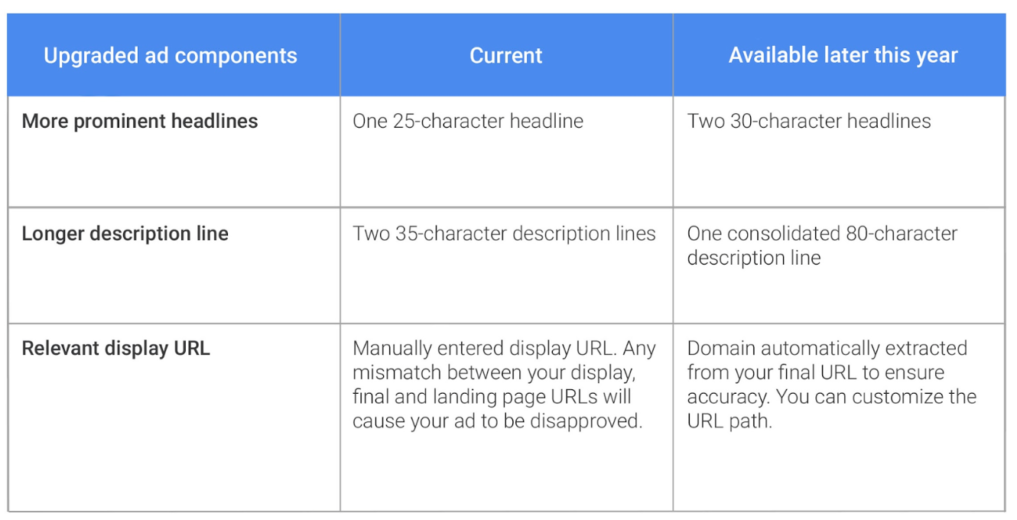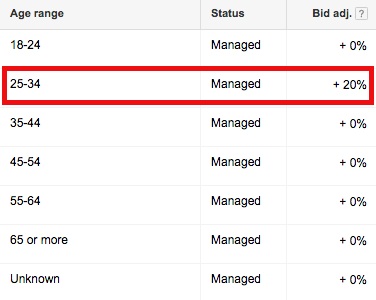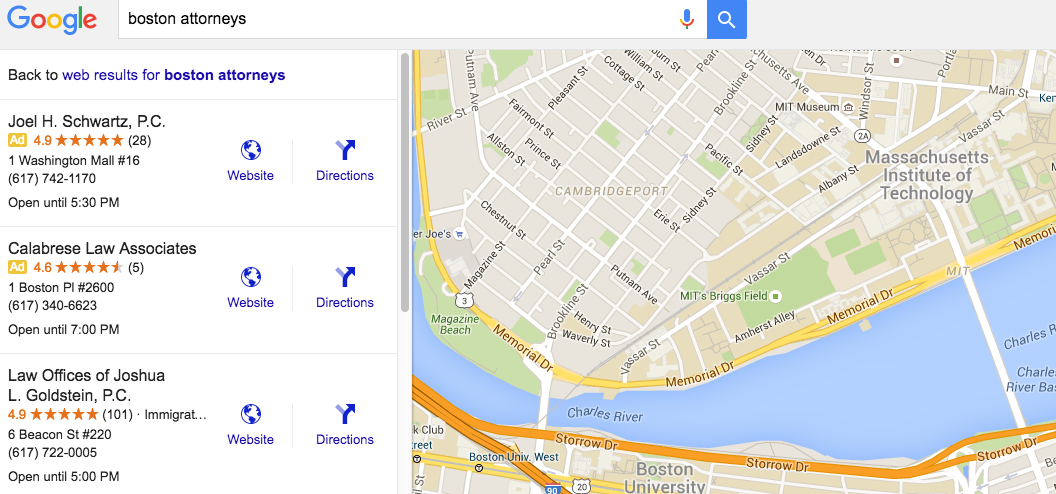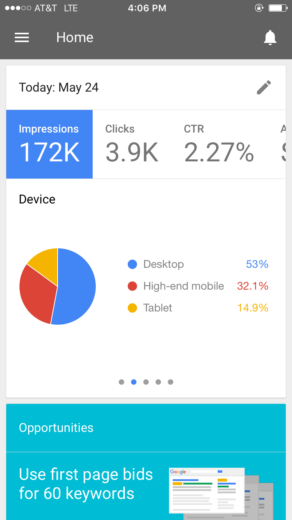6 Takeaways From Google’s Performance Summit

On Tuesday, 5/24, Google hosted a Performance Summit event where new features and updates to existing products were shared. One of the key themes of the event was mobile and how we interact with the world through our smartphones and tablets. Many of the updates announced for AdWords and Google Analytics were a direct result of our reliance on our devices and the fact that nearly half of the trillions of searches on Google occur on mobile.
With mobile being the focus, there were 6 main takeaways for advertisers. Some of the updates are a long time coming while others are a pleasant surprise. We’ll first begin with a new text ad format.
1) Expanded Text Ads
Earlier this year Google removed the right sidebar ads from desktop search listings, allowing this platform to have the same look and feel of mobile and tablet. Google has now gone a step further by introducing expanded text ads across all devices. Here is a look at which components of text ads will be impacted.

The biggest aesthetic difference is that there will now be two, 30-character headlines. Currently, you can still utilize an extended headline if description line 1 ends in a distinct sentence (ie: a period at the end), but this new format makes the long headline the norm. Since the headline is emphasized more than the description, advertisers have a great opportunity to better highlight key messaging. Whereas generally the call to action is put in the description lines, the CTA can now be tested in the extended headline. Or, sale messaging that was relegated to the less emphasized description can be placed in the headline.
As far as the new 80-character description line, it now acts similar to how an organic meta description would. Meta descriptions are generally about twice the character count of the new ad length, but they showcase the main highlights of the page. With text ads now having more characters (and further emphasis in the headline), the description line can be more of an actual description rather than just include the targeted keyword and value ads.
These expanded text ads will be a welcome addition to advertisers. My guess is that by the end of 2016, this format will be the new standard.
2) Bid Adjustments By Device Type – Including Tablet
It was music to advertisers’ ears when Google announced that we will once again be able to bid differently for tablets. However, the changes come with a wrinkle. Instead of desktop being the only base for bid modifiers, mobile and tablet can be the origin. For example, let’s say that mobile traffic is most important to you. You will now be able to set your bids with mobile as the default device and set modifiers for desktop and tablet. Your desktop bid adjustment could be -50% while tablet is at -20%. The details of how this update will look in the interface are unclear, but bid modifiers are now available for all devices.
The other announcement regarding bid adjustments has to do with a wider range. You’ll be able to adjust bids up to +900% compared to the current +300%.
3) New Audience Formats For The Search Network
Over the years, Google has expanded remarketing and demographic capabilities to better target searchers first on the Display Network, and then more recently on the Search Network. Remarketing Lists for Search Ads (RLSAs) have been around for a few years, allowing advertisers to layer remarketing audiences on to their Search campaigns. A new feature called Similar Audiences for Search will give advertisers the capability to create new audiences based off existing ones. If this feature sounds familiar, it is. Advertisers are also allowed to create similar audiences on the Display Network.
The second format is called Demographics for Search Ads (DFSAs). Currently in beta, this feature lets advertisers set bid modifiers on the Search Network for both age and gender. For example, if your primary audience is 25 – 34-year-olds, it would make sense to bid higher for this age group. Here’s how that adjustment will look in the interface.

Settings bids by age and gender allow that much more granularity in your account management. Furthermore, it better helps signify user search intent, showing users more personalized ads based upon demographics.
4) An Improved Display Network
There are currently north of 20 different Display Network image ad sizes. Even if advertisers only utilize the top 7 sizes, it still means creating ads in 7 different sizes per theme. Depending on A/B testing and/or additional creative per theme, the number of image ads multiplies quickly. That’s why Google will be releasing responsive ads. Advertisers will provide headlines, descriptions, images, and URLs while Google does the rest.
These responsive ads are exciting, but they also sound a little too good to be true. Google currently offers a Display Ad builder which scans your site for relevant images and copy. The tool makes creating Display ads convenient, but the ads generally aren’t that sophisticated. For this reason, many advertisers still prefer to create their own ads. It will be interesting to see if these ads can produce good results while also cutting down ad creation and management time.
The other Display Network announcement relates to remarketing campaigns. Google will be opening up its cross-exchange inventory to allow for more exposure on websites and apps, giving advertisers that much more visibility.
5) Local Search Ads
Included in Google’s emphasis on mobile is the ability for searchers to easily find local businesses. Google states that nearly one-third of all mobile searches are related to location. In addition, the industry is abuzz about more searches using “near me” terminology. For those businesses using location extensions, ads have the potential to be more visible on Google.com and Google Maps. Here are a couple example ads for the search “Boston attorneys.”

Google is also utilizing new ad formats, including promoted pins (not to be confused with Pinterest’s version) and special offers. The goal is to have businesses further stand out whether it is directly on the map or giving users extra incentive to come into the store.
Not to be lost in the physical location discussion is the measurement of users visiting/purchasing offline when first conducting an online search. Google continues to make steadfast efforts reporting store visits while claiming that over 1 billion visits have occurred globally. Expect measurement efforts to only increase .
6) A Redesigned AdWords Interface
The final takeaway is that a redesigned interface will be coming by the end of 2017. Screenshots of the in-development interface were shown during the summit. The new interface is sleeker and more user-friendly than what currently exists. In March, Ginny Marvin of Search Engine Land wrote a great piece that explains the reasoning behind the redesign.
This facelift makes sense, especially since Google released an AdWords app earlier this year that makes it easy to conduct optimizations on your phone. The app interface looks similar to the interface currently being designed. Here’s a sample view from the app.

Final Thoughts
Advertisers should be excited about the new features and updates coming to Google. With mobile as the backbone, AdWords is entering its next evolution and ensuring it stays current with user search behavior.
What are your thoughts on these announcements? Tweet us to share your thoughts and opinions.



